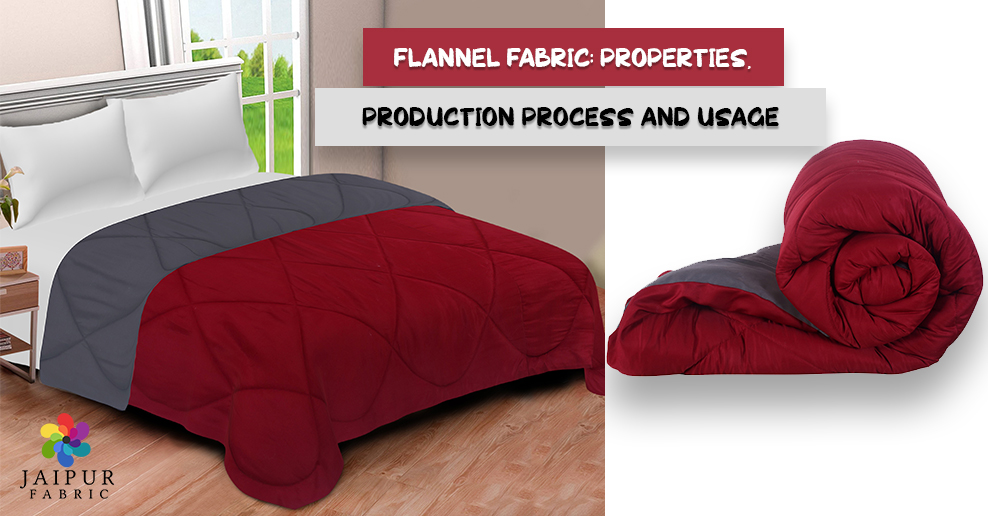
What Is Flannel Fabric?
A soft, medium-weight and loosely woven fabric that is brushed on both sides also called napping to raise fine fibers. This fabric is generally woven with patterns such as plaid and tartan and is one of the favorite fabrics for bed sheets and blankets during the winter.
Nowadays, flannel is made from wool (called wool flannel), cotton (called cotton flannel fabric), or other synthetic fibers.
3 Characteristics of Flannel Fabric
Flannel fabric is known for being:
Soft: Flannel fabric is quite popular for being soft, comfortable, and cozy. And this soft characteristic is because of soft fibers (generally wool or cotton flannel), its loose weave (whether plain or twill), and its napped texture. It’s a common pick for flannel shirts and flannel sheets.
Warm: This fabric has the capability to hold heat quite well, making it a top choice for clothing, winter pajamas, and hand made quilts.
Moisture-wicking: One of the important features of this fabric is moisture-wicking. Due to its loose weave, flannel fabric is too airy, which means such fabric won’t capture moisture instead wick it away. Apart from this, high-quality flannel is generally created from wool (a natural fabric) that is quite popular for its moisture-wicking capability.
How is a Flannel Fabric Made?
There are a few stages in the production of flannel fabric:
Base material production
First of all, the base material for flannel fabric is taken. Based on the type of item needed, this base material may be cotton, wool, or any other synthetic fibers. Generally, fabric like silk is not good for flannel production.
Yarn spinning
The next step is spinning yarn. The textile yarn is spun in the same way as that of other fabric yarn is made. However, some considerations might be taken for yarn that’s primarily used in flannel, but the prime differentiating marks of Flannel fabric show during the weaving phase.
Fabric weaving
Generally, in order to make Flannel fabric, twill, or plain weave is used. The woven fabric may be brushed (napped) on one or both sides to make a soft texture that hides the weave.
Final treatments
Synthetic fabric is usually offered with a flame-retardant layer that might not be good for the skin. While wool is a natural flame-resistant fabric, and any number of treatments may be implemented to cotton flannel.
Where You Can Use Flannel Fabric?
The flannel fabric has a plethora of usage:
Cold-weather clothing- Due to its softness and warmth features, Flannel fabric is a go-to choice for fall and winter clothing. You may also see outerwear (such as jackets and coats) and flannel pants made from Flannel fabric.
Outdoor clothing- Skin-friendly, warm, and moisture-resistant features make the flannel fabric perfect for outdoor clothing, from flannel made shirts to jackets.
Pajamas and sleepwear- Good pajamas must-have comfort over other things, so it wouldn’t give you a surprise that ultra-soft flannel fabric is the best-fit for pajama tops and bottoms.
Quilts and other home décor items- Apart from fashion stuff, flannel fabric is quite a common fabric for throw blankets, upholstery, and bed sheets due to its soft woven fabric. Flannel is a well-known quilting fabric among quilters.
If you’re searching for flannel fabric quilts in the market, we offer a vast collection of quilts made from flannel fabric at affordable rates.
Sub-types of flannel fabric
We have listed below some types of flannel fabric:
1. Wool flannel
Welsh flannel was earlier created from wool, and majority of European flannel are also woolen. Cotton was not primarily used in Europe as it was produced in India.
2. Cotton flannel
Cotton flannel fabric became well-known during the Colonial expansionist time, and this fabric remains highly in demand for soft, rich flannel garments or bed sheets with napping on both sides.
3. Synthetic or mixed flannel
Nowadays, lots of flannel in the market are created with synthetic materials such as polyester or nylon instead of natural fibers. However, artificial textiles are more flammable, that’s why these synthetic flannels are harder on the environment.
4. Ceylon flannel
As the name says, Ceylon flannel is originally produced in Ceylon (now Sri Lanka). This kind of flannel comprises of a 50/50 mix of cotton and wool.
5. Baby flannel
This kind of flannel fabric is napped on both sides and is known for its fineness. It can be created from any material that is generally used to make flannel, but material such as wool and cotton offer the softest textures. That’s why this type of flannel is mainly used for making baby quilts.
6. Diaper flannel
While many parents wouldn’t think of their cotton, reusable baby diapers as being made of the same fabric as their winter bed sheets, the textile used to make these disposable diaper alternatives is technically a type of flannel. This diaper flannel fabric is napped on both sides to assist absorbency and comfort.
7. Vegetable flannel
During the 19th century, vegetable flannel fabric became popular in Europe. This type of flannel fabric is produced from cellulose. In the 20th century, Vegetable flannel lost the market after petrochemical-based fabrics became available.
8. Flannelette
Flannelette is woven a bit differently than true flannel, which would lead coarser texture. Such flannel type can be produced with any of the common materials that is used to weave flannel.
 Categories
Categories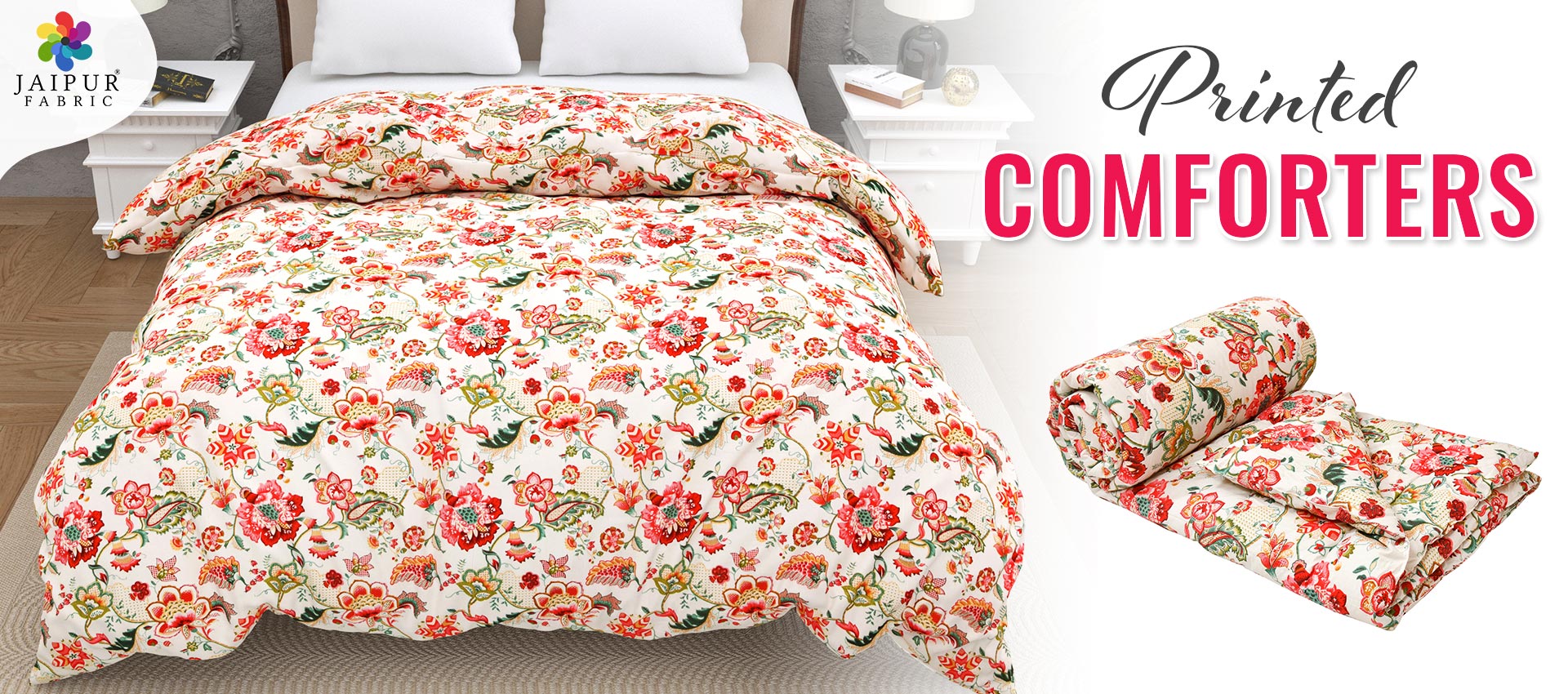
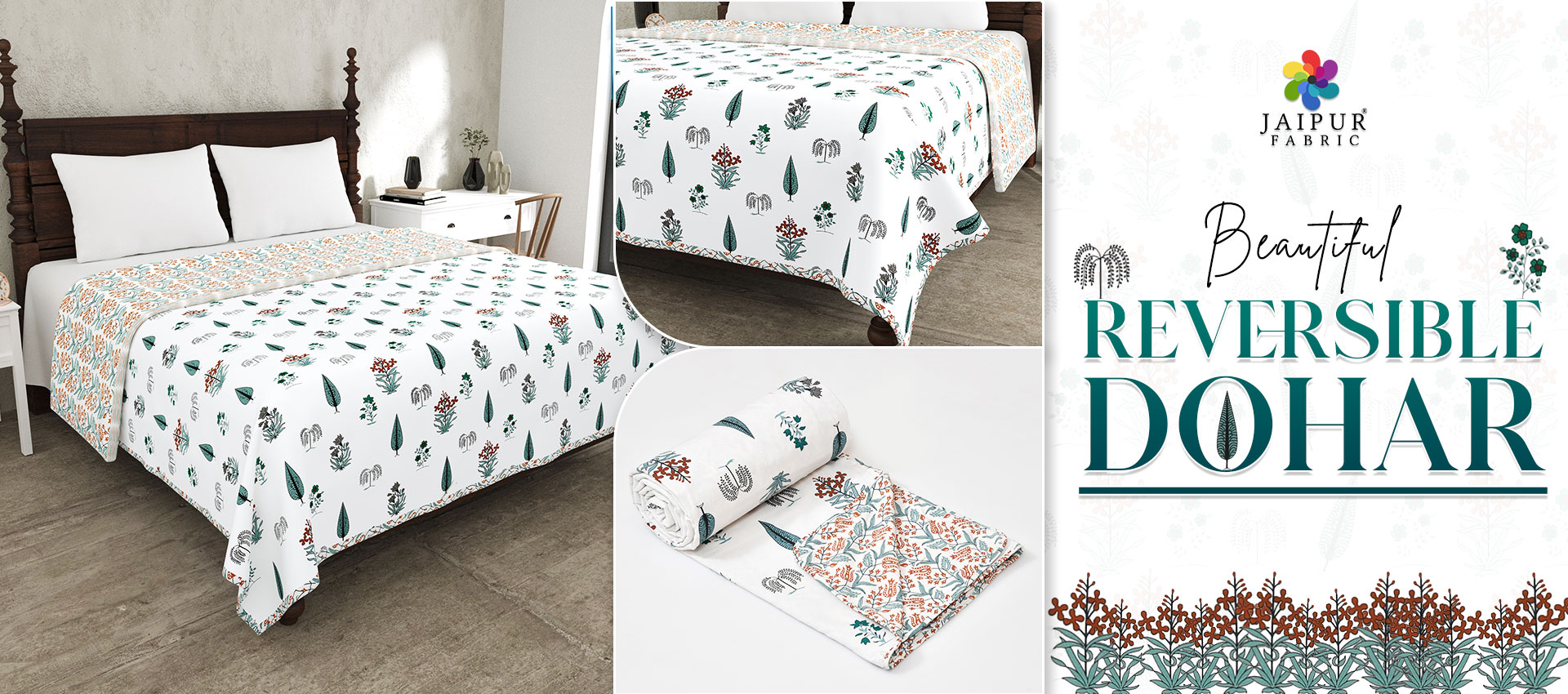
Stay cozy in Style with the Jaipur Fabric Reversible Dohar (AC Blanket)
August 22nd, 2023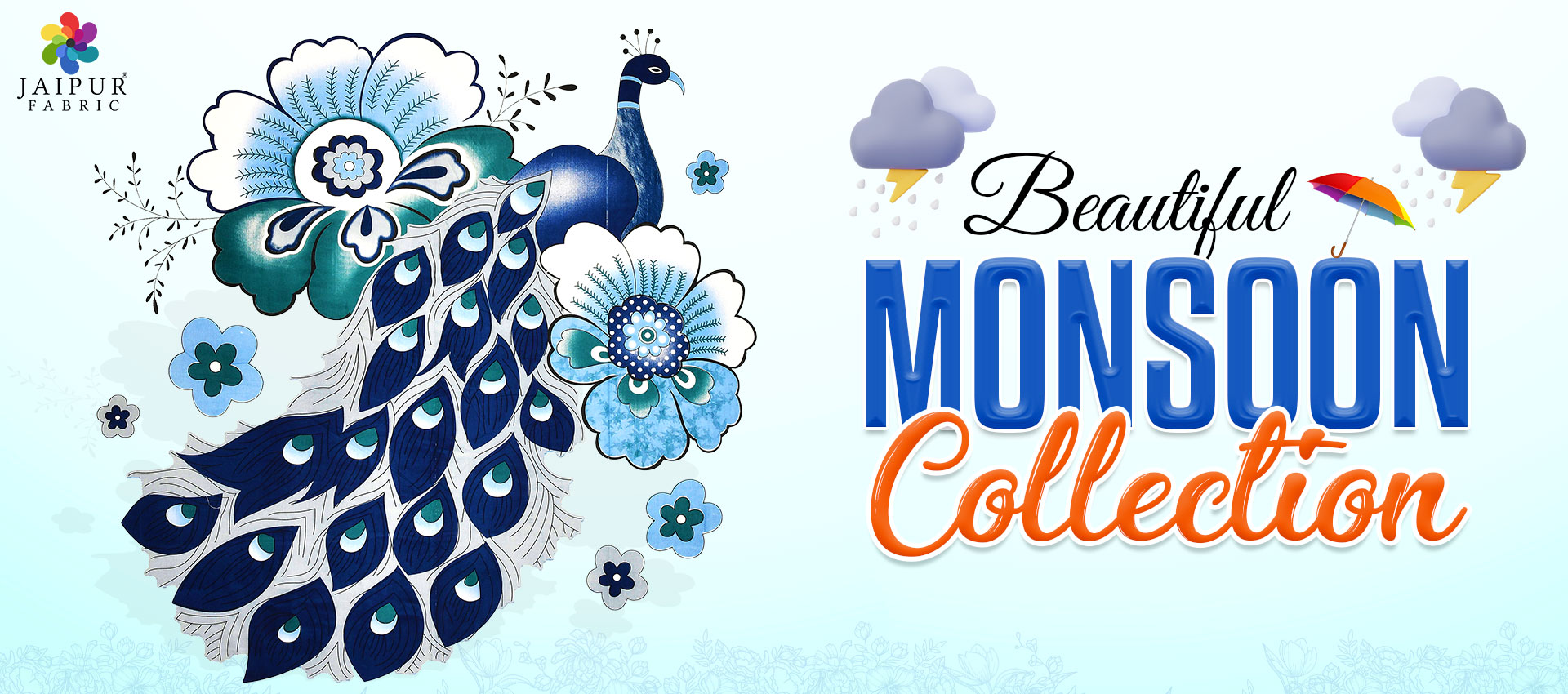
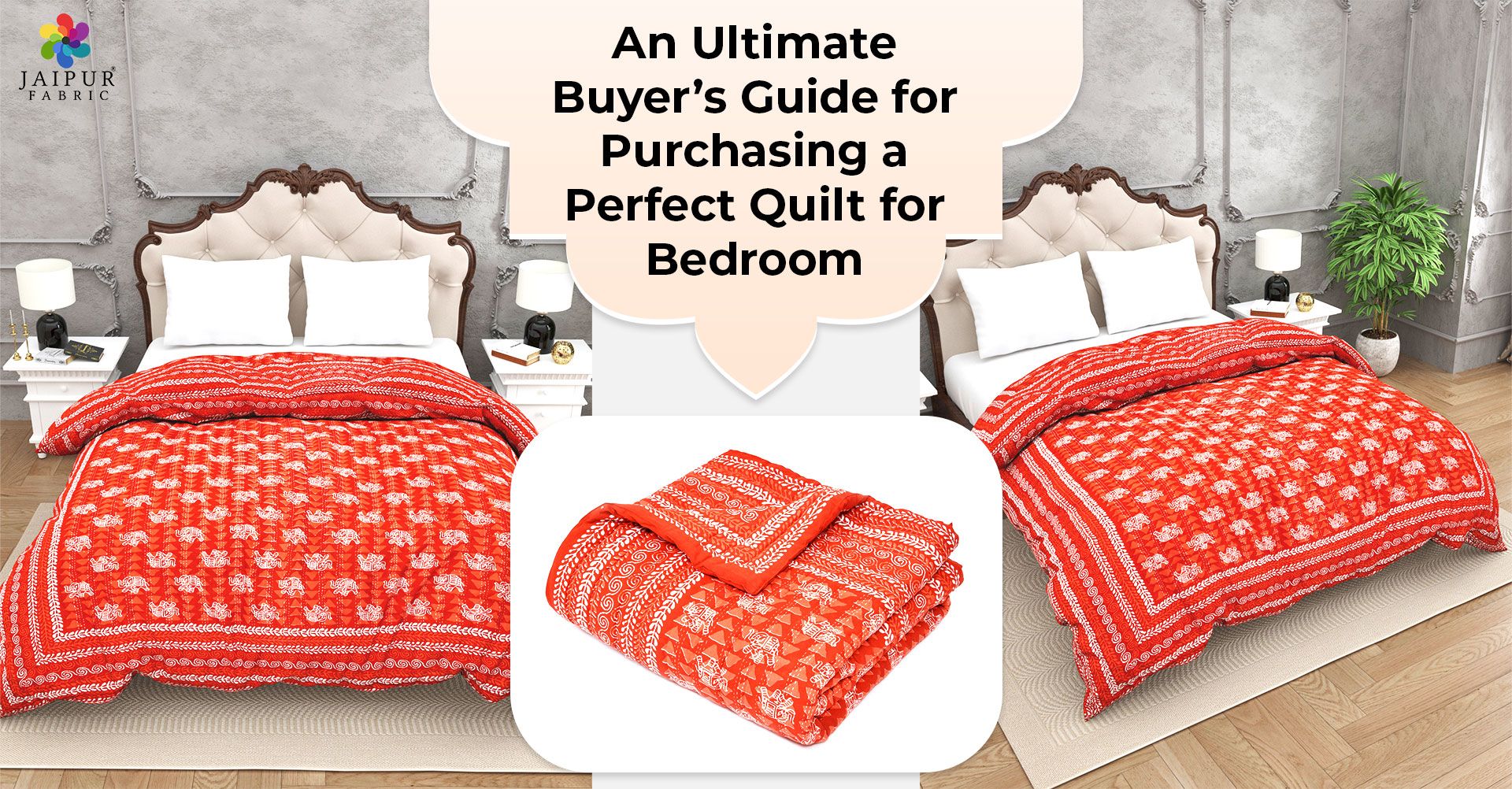
An Ultimate Buyer’s Guide for Purchasing a Perfect Quilt for Bedroom
December 30th, 2022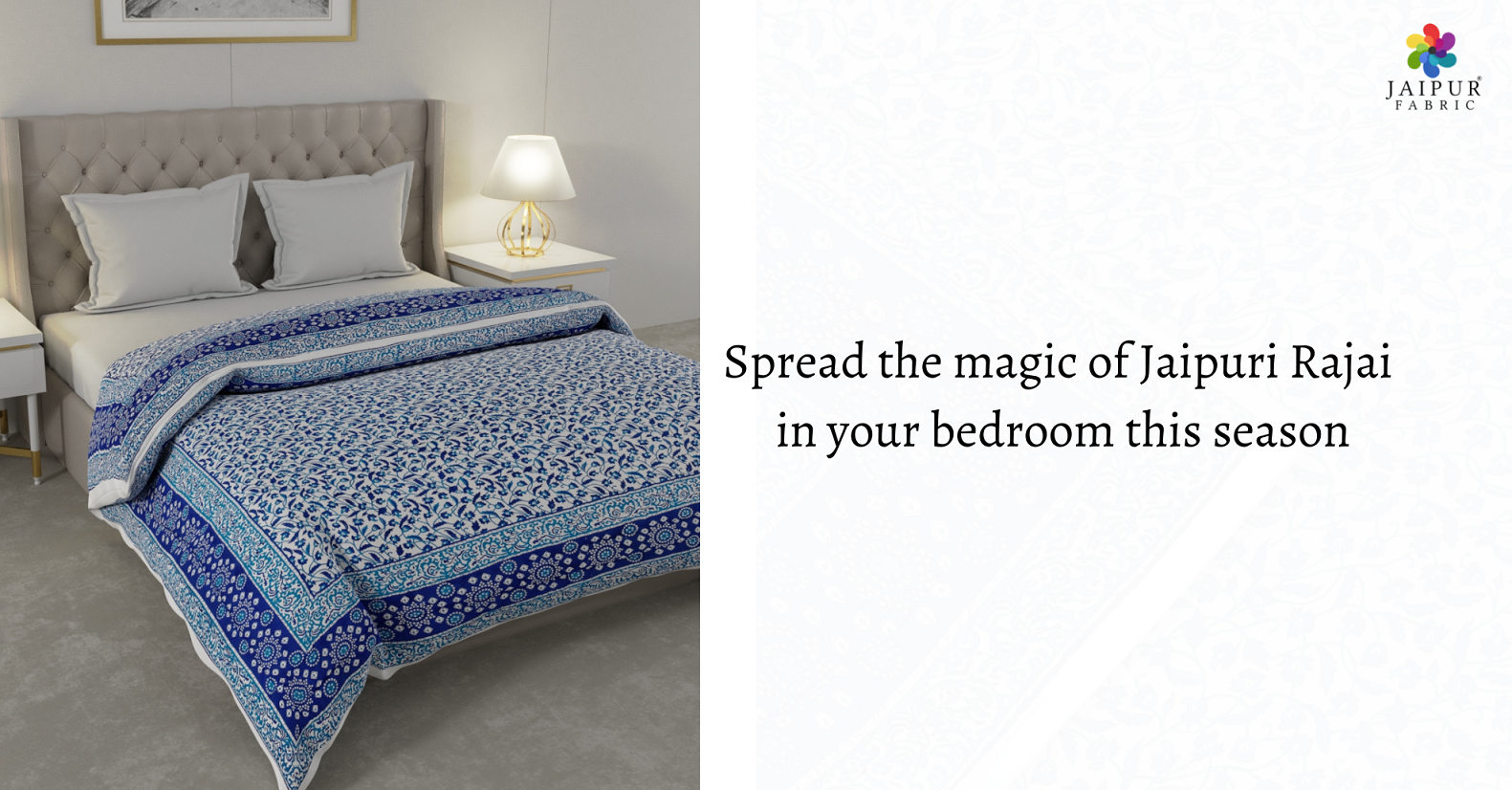
Spread the magic of Jaipuri Rajai in your bedroom this season
November 17th, 2022